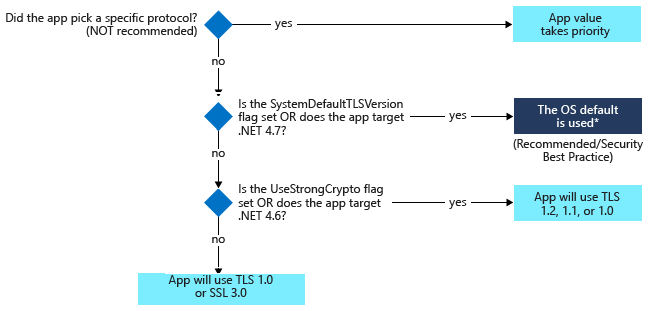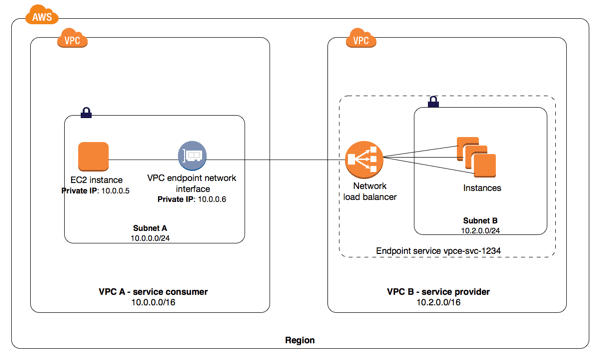
Host is a computer that provides services for other computers in a network. The host is often a mainframe computing device that connects to other workstations to provide service to the network's programs. In Internet lingo it is also known as large server. In both cases, the host is a powerful device or program that provides services to other programs or devices that are connected to the network.
Hosts are devices or computers that can communicate with other hosts in a network.
A host, also called a server, is a computer that connects to a network and provides services to other devices. Its functions include sending and receiving applications and data. In network architecture, hosts are either physical or virtual devices. A network could also include switches and routers.
A network is a collection or devices that connect with each other by using an Internet Protocol address. Each device has a unique IP address. This allows hostnames, which can be translated into IP address, to be easily found by other devices and networks. A network can be made up of many devices, such as hubs or switches, routers or WiFi boosters.

Servers offer services for programs connected to the Internet.
Servers are computer systems that offer services to other computers or programs that are connected to the network. A server operating system is what they typically use. This OS manages the computers' resources and handles all the server-related tasks. These systems offer more processing power and features than regular computers.
Servers can provide information to other computers like websites and files. They are an integral part of any information technology infrastructure. There are many types available. Each one is different in terms of size, shape, capability, and capacity.
Distributed hosting refers to a form distribution hosting
Distributed hosting is a type of web hosting where many users share a single server, rather than requiring each website owner to purchase their own physical server. Web hosts store their servers in data centres, while subscribers do not have to maintain their own server. Instead, users input their URL into their web browser, which translates it into an IP address and sends it to the server. The web host leases out the servers to users who use them for their websites.
A new generation of distributed web hosting is now available through the InterPlanetary File System (IPFS). This network-based protocol allows users to share content in a distributed system, such as a shared database. IPFS uses content-addressing as a way to uniquely identify files within a global file space.

Cloud hosting is an emerging type of hosting
Cloud hosting can be a type that lets you pay as little or much as you need. This type hosting is perfect for websites that have high traffic but need flexible pricing. It offers a safer storage option than traditional servers. Additionally, it can be used to monitor and protect web applications. It also offers more flexibility in pricing than traditional web hosting.
Cloud hosting is a way to divide a physical server into multiple virtual machines. These virtual servers then connect to create one network for hosting your website. This hosting option is also known by the acronym cluster server hosting. It is more expensive than shared hosting, but offers many benefits. Cloud hosting allows you to easily anticipate traffic surges and load virtual servers with traffic without overloading them. Some websites require greater security than others. Cloud hosting gives you the flexibility to meet your needs.
FAQ
What HTML & CSS can I use to create my website?
Yes, you can! It's possible! You need to have basic knowledge in web design and programming languages, such as HTML (Hyper Text Markup Language), CSS and Cascading Style sheets (Cascading CSS Sheets). These languages can be used to create websites which can then be viewed by everyone who has an internet connection.
What is a static site?
A static site is one that stores all content on a server. Visitors can access the website via web browsers.
The term "static", as it is sometimes called, refers not to dynamic features such changing images, videos, animations, etc.
This site was originally designed for intranets. However, it has been adopted by small businesses and individuals who need simple websites with no custom programming.
Because they are easier to maintain, static sites have been growing in popularity. It's easier to update and maintain static sites than a website that has many components (such blogs).
They also load more quickly than dynamic counterparts. They are ideal for mobile users and those with slow Internet connections.
Also, static websites are more secure that dynamic counterparts. You can't hack into a static site. Hackers only have access the data in a database.
There are two main options for creating a static website.
-
Using a Content Management System (CMS)
-
Creating a Static HTML Website
It all depends on what you need. A CMS is my recommendation if your first website was created.
Why? Because you have complete control over your website. A CMS means that you don't have to hire someone to set up your website. Upload files directly to the CMS.
You can still learn to code and make a static website. It will take some time to learn to program.
Can I make my website using HTML and CSS?
Yes! If you've followed the steps, you should now be able create your website.
Now that you are familiar with how to create a website's structure, you will also need to be familiar with HTML and CSS programming.
HTML stands for HyperText Markup Language. Think of it like writing a recipe for a dish. You would list ingredients, directions, etc. HTML is a way to tell a computer which parts are bold, underlined, italicized or linked to other parts of the document. It's the language that documents use.
CSS stands for Cascading Style sheets. It is like a stylesheet that you use to create recipes. Instead of listing out each ingredient and instruction, you write down general rules for things like font sizes, colors, spacing, and more.
HTML tells the browser how to format a web page; CSS tells it how to do it.
Don't worry if you don't know the meaning of either one of these terms. Follow the tutorials below, and you'll soon be making beautiful websites.
Statistics
- The average website user will read about 20% of the text on any given page, so it's crucial to entice them with an appropriate vibe. (websitebuilderexpert.com)
- In fact, according to Color Matters, a signature color can boost brand recognition by 80%. There's a lot of psychology behind people's perception of color, so it's important to understand how it's used with your industry. (websitebuilderexpert.com)
- Did you know videos can boost organic search traffic to your website by 157%? (wix.com)
- At this point, it's important to note that just because a web trend is current, it doesn't mean it's necessarily right for you.48% of people cite design as the most important factor of a website, (websitebuilderexpert.com)
- Is your web design optimized for mobile? Over 50% of internet users browse websites using a mobile device. (wix.com)
External Links
How To
How can I start as a UI Designer
Two methods can be used to become a UI developer:
-
You can earn a degree in UI Design by going to school.
-
You can also start your own business.
You will need to complete four years of college or university study if you plan to continue your education. This covers art, business, psychology, and computer science.
You can also take classes at community colleges or state universities. Some schools offer free programs, while others charge tuition fees.
You'll need to find work once you have graduated. If you plan to work for your own business, you need to establish a client base. It's important to network with other professionals, so they know you exist.
You can also look for opportunities to intern at companies that specialize in developing web applications. Many companies hire interns to gain experience before hiring full-time employees.
It will be easier to land more jobs once you have a portfolio of your work. You should have work samples and information about the projects you worked on in your portfolio.
It is a smart idea to send potential employers your portfolio via email.
You will need to market your services as a freelancer. Advertise your services on job boards such as Indeed, Guru, Guru, and Upwork.
Freelancers often receive assignments from recruiters who post openings online. These recruiters seek qualified candidates to fill open positions within certain industries.
These recruiters often provide a briefing detailing the job requirements to the candidate.
Freelancers are not required by law to sign any long-term agreements. You should negotiate an upfront payment if your goal is to move forward.
Designers prefer working directly with clients over working through agencies. Although this may sound great, many lack the necessary skills.
Agency workers usually have extensive knowledge about the industry they are working in. They have access the right training and resources to ensure they produce high-quality results.
Agency workers also receive higher hourly rates.
Working with an agency has the downside of not being able to contact your employer directly.
As a UI designer you need to be motivated, creative, flexible, detail-oriented and communicative.
Additionally, communication skills must be excellent both in written and verbal.
UI designers are responsible in designing websites through the creation of user interfaces (UI), as well visual elements.
They are also responsible to ensure the site meets user needs.
This involves understanding what information visitors need and how the site should function.
Wireframes can be created by UI designers with a variety tools. Before beginning to design, they use wireframing.
Online wireframe templates make it simple to create your own wireframes.
Some designers concentrate on UI design only, while others mix UI design with graphics design.
Photoshop is a tool used by graphic artists to edit images.
Adobe InDesign is used to create layouts and pages.
Photographers capture images using digital cameras or DSLRs.
The photos are then uploaded into a photo editing program. Here they can add captions, filters, or other effects.
The photographer saves the image as a compatible file format for the website.
It is important to take into consideration all aspects of the design process when building a website.
This includes research, planning and prototyping.
Research – Before starting any new project, it is important to conduct extensive research.
Planning - Once you've completed your research, you'll want to begin developing a plan.
Wireframing - A wireframe is a preliminary sketch of a web page or application.
Prototyping-Prototypes ensure that the final product matches your initial vision.
Testing - To ensure that the prototype works correctly, it should be subject to multiple rounds of testing.
Coding: Coding is the process of writing code for computers.
Content Creation: Content creation can include everything from copywriting to managing social media profiles.
Publishing is the act of uploading files and making sure that the site can be accessed.
As a freelance UX/UI designer, you will need to learn about different projects.
Some companies require only wire frames, others require complete prototypes.
Depending on the type of project you accept, you may be asked to complete specific tasks.
For instance, if your job is to create wireframes you might have to make several over the course of time.
You may need to develop a functional version of the site if you are hired to build a prototype.
It doesn't matter what kind of project it is, strong interpersonal skills are essential.
Referrals are the most common way that clients hire freelancers. You must establish solid relationships with potential employers.
Additionally, communication skills are essential.
A portfolio is an important component of any freelancers' arsenal.
It displays your work and shows your ability to produce high-quality results.
You can do it online with a professional portfolio.
You can find similar websites to yours online to help you get started.
Then, search these sites to see how each one presents its services.
Once you identify what you think are the best practices, go ahead and adopt them.
It is also a good idea to include links in your resume to your portfolio.